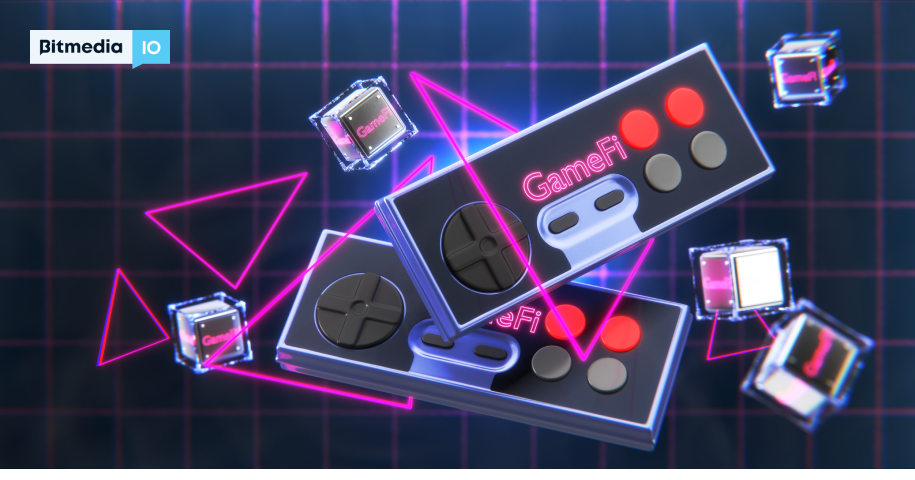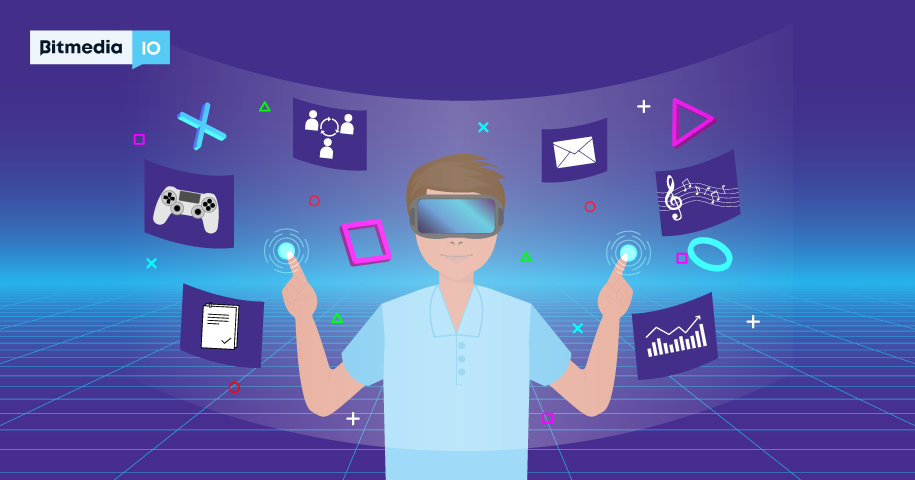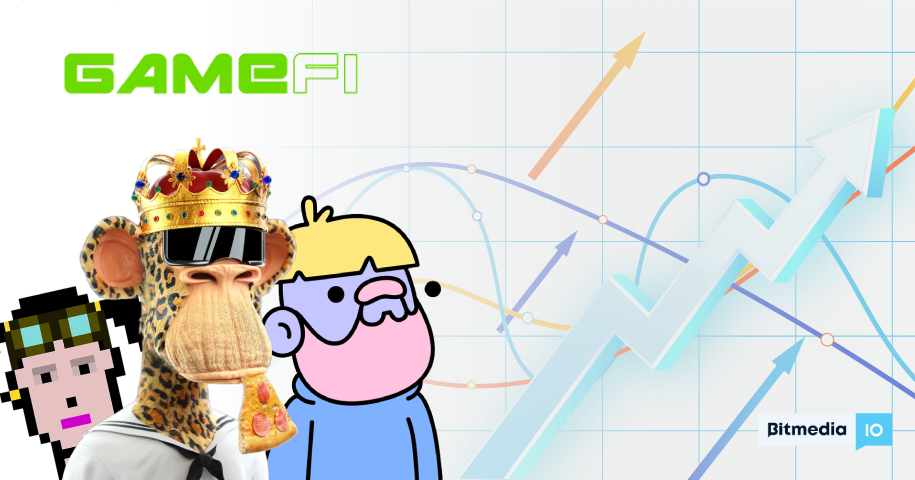The Future of GameFi: Where Must It Go Next?

Blockchain technology has already significantly impacted various industries, and now it is starting to revolutionise the gaming industry as well. Blockchain gaming takes traditional gaming to the next level with numerous benefits for developers and players, so it is no surprise that it is increasing in popularity every day.
In this article, we will discuss the rising popularity of blockchain gaming, focusing on GameFi, a new game-based economic model. We will also discuss the potential investment opportunities in this field and the future of GameFi.
What is GameFi?
If you are wondering what “GameFi” means, it is a combination of the words “gaming” and “finance”. GameFi is a term used for games developed on the blockchain with a business model that provides financial incentives for developers and players.
Blockchain Offers Gamers Full Control of Their Assets
The primary differentiator between traditional and blockchain games is users’ complete control over the assets they own in the games they play on the blockchain.
In traditional and online gaming, players do not own the virtual items they purchase or earn in-game. The items are stored on the game developers’ servers, and the developers have complete control over them. This means that players can lose access to their items if the game shuts down or the developers decide to take them away.
In addition, complete control over player assets means that the game developer can unilaterally determine how the assets interact with the general gaming environment. For example, a developer can decide to manipulate the power of a weapon to reduce the effect it has on an enemy’s health, making gameplay harder for players and altering the gaming experience.
On the other hand, blockchain gaming uses non-fungible tokens (NFTs) to represent virtual items. NFTs are unique digital assets stored on a blockchain, representing anything from in-game items to virtual real estate. Since NFTs are stored on a decentralised network, players own their assets and gaming experience fully.
Having assets stored as NFTs also allows players to derive real-world value as their assets appreciate and the flexibility to sell or trade their NFTs on the open market without any interference from the game developers.
GameFi Brings a New Game-Based Economic Model
GameFi is a game-based economic model revolutionising gaming as we know it. Traditional games use one of two models: free games use a “play-to-win” model that is purely entertainment-based, while paid games – or games where in-app purchases are unavoidable – use a “pay-to-play” model.
GameFi turns this economic model on its head. Instead of playing for entertainment or paying to play, GameFi introduces a “play-to-earn” model which combines both economic models of traditional gaming.
This model adds an earning component so players can benefit from the value they create from participating on the gaming platform. On the other hand, game developers recoup their investment and profit from platform fees and royalties made on the sale of game assets.
GameFi’s economic model balances the distribution of wealth across GameFi tiers and incentivizes players to continue contributing to the platform’s growth, creating a healthy ecosystem.

Player’s earnings are paid out in one of three ways:
- Cryptocurrency earnings: some blockchain games allow players to earn the platform’s native cryptocurrencies for staking their NFT assets.
- Rewards: blockchain games might reward players with governance tokens or a token designated as a reward token.
- Unlocked NFTs: some blockchain games reward players with NFTs for carrying out tasks, staying active on the platform for a specified period, or through “breeding” using two NFTs.
Rewards earned from participating and contributing to the platform can then be sold on crypto exchanges, staked to earn more rewards, or used to improve the player’s in-game performance. This process has been made easier thanks to the introduction of marketplaces where players can buy, sell, swap, or breed their assets.
The assets can be also used as collateral on Decentralised Finance (Defi) platforms for borrowing, liquidity mining and yield farming.
Potential Investment Opportunities
Analysis from ReportLinker pegged the market capitalization of the GameFi industry at $8.9 billion in 2021. The report also estimated that the GameFi crypto sector would grow at 23.7% CAGR to $74.2 billion by 2032. This presents a significant investment opportunity for those interested in the field.
Investing in blockchain gaming can be risky, as with any emerging industry, but it has excellent potential for high returns if you get in early on the action. There are several ways to invest in GameFi and earn a return, but these are the most profit-generating methods we know:
- Play the game: the easiest way to invest on any blockchain gaming platform is to invest your time by playing the game and earning available rewards. For example, in its heyday, Axie Infinity players in the Philippines were reported to have earned up to $600 monthly, 15x the national minimum wage.
- Buy NFTs: you can invest in the future of a blockchain game by buying and holding the NFT assets associated with it. If the game takes off, your NFTs can rapidly rise in value, leading to a massive profit.
- Stake NFTs: staking your NFTs creates an additional income stream for you besides the rising value of the NFT assets. Blockchain games typically specify the interest rates you will earn for staking your NFTs over a period of time, making it easy for you to forecast staking earnings.
- Trade or hold tokens: you can buy tokens and hold onto them until they rise in value, or take advantage of arbitrage opportunities.
- Stake Tokens: staking your tokens allows you to earn interest while you wait for the token to rise in value.
- Get in early: blockchain gaming companies usually host an Initial Exchange Offering or Initial Coin Offering to raise funds to develop the game. If you can discover a good project early on and purchase its tokens for pennies on the dollar, you could get a massive ROI when the project takes off.
- Buy company shares: if you believe in the developers’ vision, you could purchase the company’s shares and profit from the rise in the value of your shares over time.
As a side note, crypto projects are very volatile, so we advise you to do thorough research and due diligence before investing in any project.
What is the future of GameFi?
The rise in the number of people participating in online gaming and streaming and the increasing popularity of massively multiplayer online role-playing games (MMORPG) indicate a strong appetite by the public for online games.
Crypto video games are well-positioned to take advantage of the demand by offering greater value compared to traditional games.
These are some of the transformations we are looking forward to in the GameFi market:
- More accessibility: greater accessibility will enable the GameFi sector to reach the peak of its potential and unlock massive value for developers and players. These are some of the things we think developers can do to make GameFi more accessible:
- Education: according to data from DataReportal, just 10.2% of the global population owns cryptocurrencies. More education is required to reach the 89.8% who are either sceptical or oblivious to the industry’s existence.
- Connectivity: GameFi developers need to consider countries with poor internet connection as they develop their games. Incorporating intelligent design elements that make it easy to connect and stay in-game will unlock new user segments.
- Accessibility: most decentralised games are only accessible through web browsers. This limitation restricts the gaming experience and makes it fall short of the experience traditional games have trained players to expect. GameFi developers must pursue partnerships with companies like PlayStation and Xbox to unlock the full potential of blockchain games.
- It’s not all about money: GameFi developers need to transition from promoting blockchain games primarily using the earning component and developing AAA games worthy of note for the gaming experience and building a community around the game to give players a sense of belonging. Developers can also provide more elements that give players a profound sense of accomplishment and fulfillment.
- Reduced cost of entry: the earning component of decentralised games tend to backfire when the game goes mainstream as the entry barrier becomes prohibitive – for example, players must invest about USD 1,000 before playing Axie Infinity. Excessively high barriers to entry make it impossible for most people to afford to play or scare away those sceptical about blockchain games. This point ties into the previous one.
Future of GameFi: key areas to consider
- Market trends: Look at the growth of the gaming industry and the increasing interest in decentralized finance. GameFi is a new trend in the market, and its adoption is rapidly increasing. Keep an eye on how the market evolves and the direction it takes.
- User adoption: The adoption of GameFi by gamers and crypto enthusiasts is an essential factor to consider. Look for signs of growing interest in GameFi, such as user participation in GameFi projects, new GameFi games being developed, and the growth of GameFi platforms.
- Technology advancements: The success of GameFi will depend on the development of innovative technologies that enhance the gaming experience and make it more profitable. Watch out for new advances in blockchain, decentralized finance, and gaming technology that could fuel the growth of GameFi.
- Regulatory developments: The regulatory environment will play a significant role in the future of GameFi. Keep an eye on how governments and regulatory bodies worldwide respond to the growth of crypto and decentralized finance. Regulatory clarity could provide a boost to the GameFi industry, while unfavorable regulations could stifle its growth.
- Partnerships and collaborations: Look for partnerships and collaborations between gaming companies and crypto firms. Such partnerships could lead to the development of new GameFi projects, innovative games, and the integration of decentralized finance into traditional gaming platforms.
By keeping an eye on these factors, you can gain insight into the future of GameFi and make informed decisions about investing in this emerging industry.
More about GameFi
This section provides answers to the most common GameFi questions:
- Is GameFi part of the metaverse? The metaverse is a virtual shared space in which all virtual worlds, augmented reality, converge with the internet. The metaverse is still in development, and until it is fully deployed, it is just an idea. As such, GameFi is not yet a part of the metaverse picture, but it will be a crucial component of the metaverse in the years to come.
- What are the potential challenges of the GameFi sector? One of the potential challenges of the GameFi sector is the complexity of the technology. Blockchain and NFTs can be complicated for some people to understand, which may deter some potential users from participating in the platform. Another challenge is the risk of investing in the sector, as it is still a relatively new and emerging industry.
- How do blockchain game tokens derive their value? Blockchain game tokens can derive their value from various sources, including the rarity of the token, the demand for the token on secondary markets, the utility of the token, and the overall popularity and success of the game or platform. In some cases, the value of a blockchain game token may be tied to the value of a particular cryptocurrency, such as Ethereum, which is used to facilitate transactions on the blockchain.


